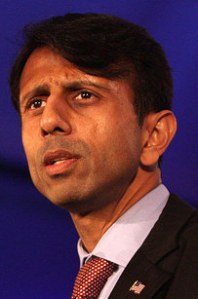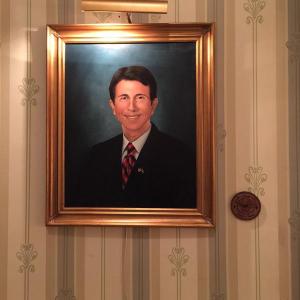The True History of the Origins of Police — Protecting and Serving the Masters of Society
The liberal way of viewing the problem rests on a misunderstanding of the origins of the police.
By Sam Mitriani
In most of the liberal discussions of the recent police killings of unarmed black men, there is an underlying assumption that the police are supposed to protect and serve the population. That is, after all, what they were created to do. Maybe there are a few bad apples, but if only the police weren’t so racist, or didn’t carry out policies like stop-and-frisk, or weren’t so afraid of black people, or shot fewer unarmed men, they could function as a useful service that we all need.
This liberal way of viewing the problem rests on a misunderstanding of the origins of the police and what they were created to do. The police were not created to protect and serve the population. They were not created to stop crime, at least not as most people understand it. And they were certainly not created to promote justice. They were created to protect the new form of wage-labor capitalism that emerged in the mid- to late-19th century from the threat posed by that system’s offspring, the working class.
Before the 19th century, there were no police forces that we would recognize as such anywhere in the world. In the northern United States, there was a system of elected constables and sheriffs, much more responsible to the population in a very direct way than the police are today. In the South, the closest thing to a police force was the slave patrols. Then, as Northern cities grew and filled with mostly immigrant wage workers who were physically and socially separated from the ruling class, the wealthy elite who ran the various municipal governments hired hundreds and then thousands of armed men to impose order on the new working-class neighborhoods.
Class conflict roiled late-19th century American cities like Chicago, which experienced major strikes and riots in 1867, 1877, 1886 and 1894. In each of these upheavals, the police attacked strikers with extreme violence. In the aftermath of these movements, the police increasingly presented themselves as a thin blue line protecting civilization, by which they meant bourgeois civilization, from the disorder of the working class. This ideology has been reproduced ever since — except that today, poor black and Latino people rather than immigrant workers are the main threat.
Of course, the ruling class did not get everything it wanted. It had to yield on many points to the immigrant workers it sought to control — this is why, for instance, municipal governments backed away from trying to stop Sunday drinking and why they hired so many immigrant police officers, especially the Irish. But despite these concessions, businessmen organized themselves to make sure the police were increasingly isolated from democratic control. The police, meanwhile, increasingly set themselves off from the population by donning uniforms; establishing their own rules for hiring, promotion and firing; working to build a unique esprit de corps; and identifying themselves with order. And despite complaints about corruption and inefficiency, they gained more and more support from the ruling class, to the extent that in Chicago, for instance, businessmen donated money to buy the police rifles, artillery, Gatling guns and buildings and to establish a police pension out of their own pockets.
There was a never a time when the big city police neutrally enforced “the law” — nor, for that matter, a time when the law itself was neutral. Throughout the 19th century in the North, the police mostly arrested people for the vaguely defined “crimes” of disorderly conduct and vagrancy, which meant that they could target anyone they saw as a threat to “order.” In the post-bellum South, they enforced white supremacy and largely arrested black people on trumped-up charges in order to feed them into convict labor systems.
The violence the police carried out and their moral separation from those they patrolled were not the consequences of the brutality of individual officers, but of policies carefully designed to mold the police into a force that could use violence to deal with the social problems that accompanied the development of a wage-labor economy. For instance, in the short, sharp depression of the mid-1880s, Chicago was filled with prostitutes who worked the streets. Many policemen recognized that these prostitutes were generally impoverished women seeking a way to survive and initially tolerated their behavior. But the police hierarchy insisted that the patrolmen arrest these women, impose fines and drive them off the streets and into brothels, where they could be ignored by some members of the elite and controlled by others. Similarly, in 1885, when Chicago began to experience a wave of strikes, some policemen sympathized with strikers. But once the police hierarchy and the mayor decided to break the strikes, policemen who refused to comply were fired.
Though some patrolmen tried to be kind and others were openly brutal, police violence in the 1880s was not a case of a few bad apples — and neither is it today.
Much has changed since the creation of the police — most importantly, the influx of black people into Northern cities, the mid-20th century civil rights movement and the creation of the current system of mass incarceration in part as a response to that movement. But these changes did not lead to a fundamental shift in policing. They led to new policies designed to preserve fundamental continuities. The police were created to use violence to reconcile electoral democracy with industrial capitalism. Today, they are just one part of the “criminal justice” system that plays the same role. Their basic job is to enforce order among those with the most reason to resent the system — in our society today, disproportionately among poor black people.
If there is one positive lesson from the history of policing’s origins, it is that when workers organized, refused to submit or cooperate and caused problems for the city governments, they could force the police to curb the most galling of their activities. The murders of individual police officers, as happened in Chicago on May 3, 1886, and more recently in New York on December 20, 2014, only reinforced calls for harsh repression. But resistance on a mass scale could force the police to hesitate. This happened in Chicago during the early 1880s, when the police pulled back from breaking strikes, hired immigrant officers and tried to re-establish some credibility among the working class after their role in brutally crushing the 1877 upheaval.
The police might back off again if the widespread reaction against the killings of Eric Garner, Michael Brown, Tamir Rice and countless others continues. If they do, it will be a victory for those mobilizing today, and will save lives. But as long as this policing system endures, any change in policy will be aimed at keeping the poor in line more effectively.
A democratic police system in which police are elected by and accountable to the people they patrol is imaginable. But as long as we have an economic and political system that rests on the exploitation of workers and pushes millions of people into poverty, we are unlikely to see policing become any more democratic than the rest of society.



